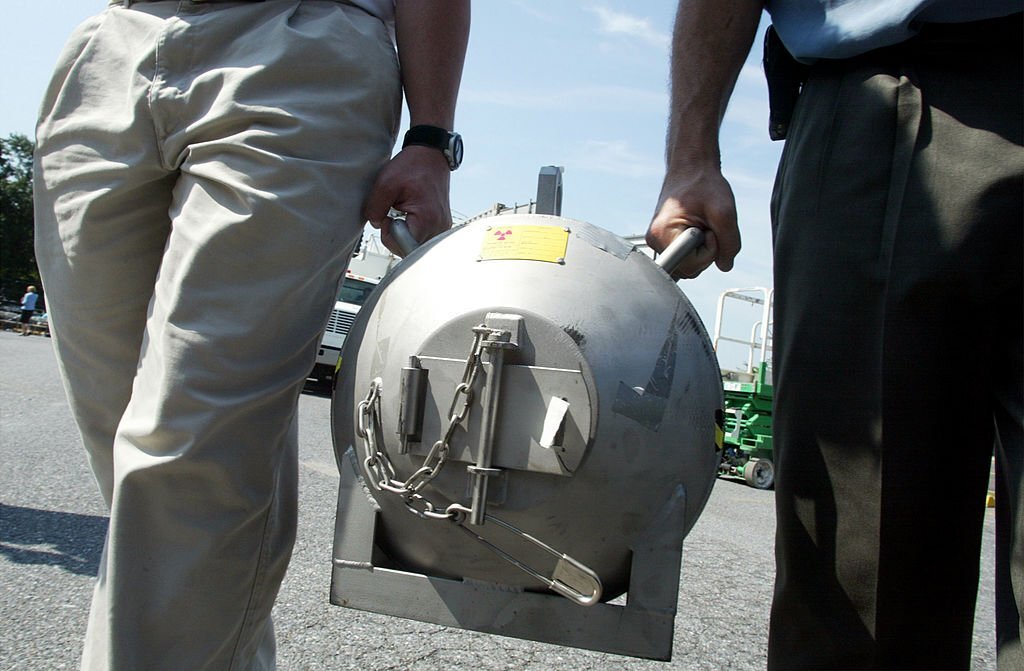Russia and Ukraine have often accused each other of planning to use dirty bombs during the Russian-Ukrainian war.
Both warring parties in the war have been accusing each other of planning to use dirty bombs, and both have denied such accusations against themselves.
The question is, what kind of weapon is this and why it is called a dirty bomb? What do such bombs do?
Are such weapons very destructive? Who uses them?
Dirty bombs are currently part of the propaganda war. Russian Defense Minister Sergei Shoigu accused Ukraine of wanting to use dirty bombs on its own territory, blaming the Russian military and discrediting the Russian leadership.
Ukrainian President Volodymyr Zelensky and several Western governments strongly denied the accusation.
From the point of view of the Kyiv government, the case is quite the opposite. President Zelensky pointed out that Moscow appears to have plans of its own.
What is a Dirty Bomb?
Dirty bombs are conventional weapons that are loaded with radioactive material. They are used under strict conditions in radiation therapy, food preservation, or industrial material testing.
Dirty bombs are not atomic bombs. This means that they are not nuclear bombs, the use of which causes a very powerful and explosive stimulus.
Unlike nuclear bombs, dirty bombs produce a wide range of lethal heat, pressure, and suction waves, as well as extremely dangerous neutron radiation, which travels far and wide through wind and rain.
Their explosion releases radiation and the long-term effects can be harmful to health.
However, all these factors depend on the amount of radiation. It can also be fatal.
The intensity of the explosion depends on the level of radiation. An explosion of a severe nature can also render a large or vast area uninhabitable for a certain period of time.
Repressed Fear Of Radiation Terror
Dirty bombs are nothing new, but they have been seen as a terrorist threat until now.
In 2003, police officers in Tbilisi and Bangkok quickly seized two illegal shipments of radioactive cesium and strontium, which could have been used to make an entire dirty bomb.
Gebhard Geiger, another researcher at the German institute SWP, then stressed the need for such an explosive device to require a mass evacuation in a densely populated area and a clean-up costing a billion dollars.
In September 2016, American lawyer and journalist Steven Burrell highlighted this topic in the American political magazine ‘The Atlantic’ as part of his cover story ‘Are we safe’ on the occasion of the 15th anniversary of the 9/11 attacks.
According to him, in 2013 and 2014 alone, 325 cases of radioactive materials were reported lost or stolen.
These risks do not include hidden radiation damage. At the time, Brill also blamed politicians for not paying enough attention to these threats.
Dirty Bombs Comparison With Chornobyl’s Reactor
“You can think of it as a radiation release from an accident at a nuclear power plant,” says German expert Wolfgang Richter.
In 1986, one of the reactors of the Chornobyl nuclear power plant failed. Since then, a 30 km area around the accident site has remained a restricted area.
However, for various reasons, former German army officer Wolfgang Richter believes that it is unlikely that Russia itself is planning such an attack.
“Russia is relying on the intensity of war in traditional ways,” he says.
A Dirty Bomb Attack Would Be Ridiculous
The radiation produced by the attack of the dirty bomb will fly in the direction of the army using it.
And in the long run, it will contaminate areas and parts of the population, which the Kremlin itself has predicted.
“I think using such a bomb would be not only irresponsible but ridiculous,” says Wolfgang Richter.
Richter sees the speculation about the use of dirty bombs as the main reason for the increase in tension and the atmosphere of war in the context of the war between Russia and Ukraine.
This danger is the biggest in their opinion. “Ukraine has already signaled a preemptive strike against a possible nuclear use by Russia,” he says.

